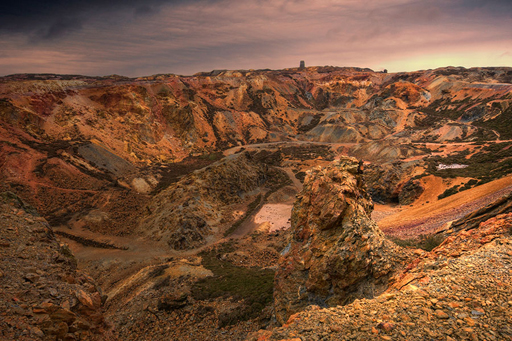4.12 Small bugs solve a lot of problems
Mining not only produces a blot on the landscape, but a lot of water, which is often very acidic. In this section, you will investigate how bacteria could be used to solve many of the problems associated with mines.
What a fine mess
Mining has brought us some amazing things, without which we would not have progressed as a civilisation to where we are now. There are, however, unfortunate consequences to extracting from the Earth the materials needed to build the shopping centres from Week 1 and the mobile phones from Week 2.
Fortunately, though, with knowledge of the interactions between rocks and biology, there may be solutions to many of those problems.
The beautiful colours in the Parys Mountain opencast mine are caused by the mobilisation and oxidation of iron, the different colours being due to the different oxidation states of iron.
The mobilisation of the iron occurred when the sulphur-rich ores and gangue material were exposed to rain water and the air, causing weak sulphuric acid to be formed. That makes many of the pools of water on the site weakly acidic – effectively they are pools of dilute sulphuric acid.
Having pools of weak sulphuric acid in the environment is quite a hazard, but the main problem with the acids formed at mine sites like Parys isn’t the acid water itself, but what the acid water can do.

